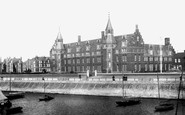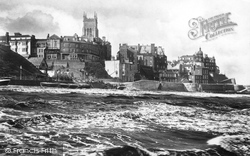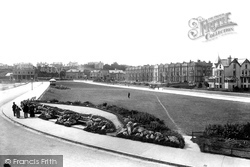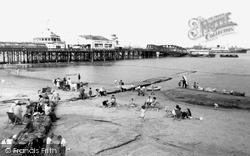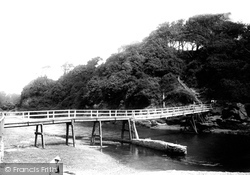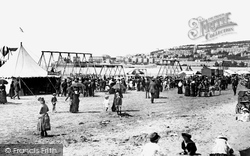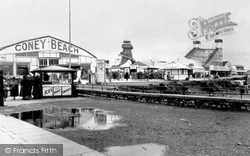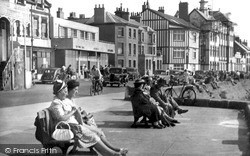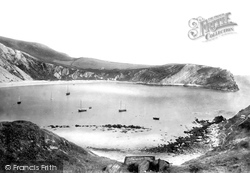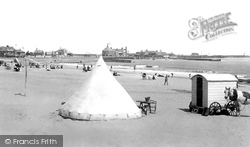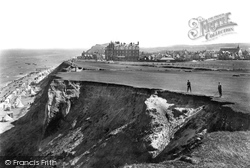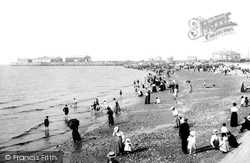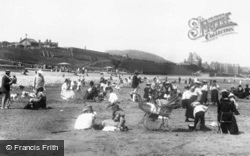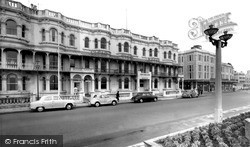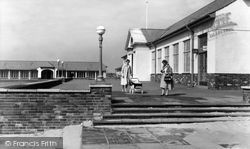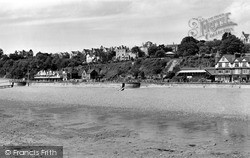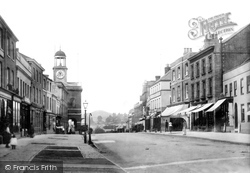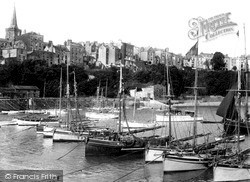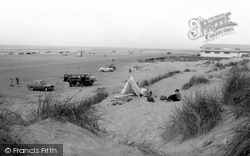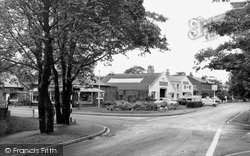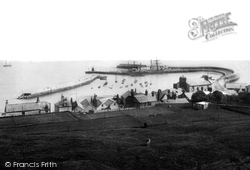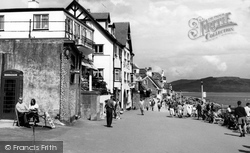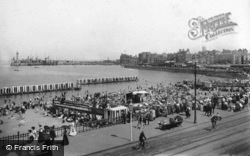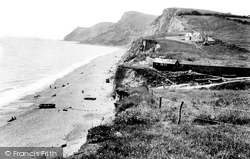Merry Christmas & Happy New Year!
Christmas Deliveries: If you placed an order on or before midday on Friday 19th December for Christmas delivery it was despatched before the Royal Mail or Parcel Force deadline and therefore should be received in time for Christmas. Orders placed after midday on Friday 19th December will be delivered in the New Year.
Please Note: Our offices and factory are now closed until Monday 5th January when we will be pleased to deal with any queries that have arisen during the holiday period.
During the holiday our Gift Cards may still be ordered for any last minute orders and will be sent automatically by email direct to your recipient - see here: Gift Cards
Places
1 places found.
Those places high-lighted have photos. All locations may have maps, books and memories.
Photos
11 photos found. Showing results 901 to 11.
Maps
4 maps found.
Books
1 books found. Showing results 1,081 to 1.
Memories
1,368 memories found. Showing results 451 to 460.
Beach Road
I have very happy memories of my early years in Litherland. We lived at number 14 Beach Road until July 1971 when we moved (due to demolition) out to Warrington. I met my best friend (of 51 years) there Barbara from number 4 and we ...Read more
A memory of Litherland in 1971
Happy Childhood Memories
Does anyone remember the Guest House,holiday home for Sunday Schools etc, in Fairbourne, right opposite the beach, just a quite road,and a cafa up the road,we were allowed to go in,, I was 10 yrs old at the time, but ...Read more
A memory of Fairbourne in 1946 by
Happy Times Then And Now
We had a caravan at Talacre in the late 70's until 1982 when I was 5. I have some vague memories of the sand dunes and the site (now Talacre Beach). Myself and my sister and my children come on holiday every year now, ...Read more
A memory of Talacre by
Pickmere Boating Lake
My wife came across John Baylies memories of Jack Spence. I was the little lad who also helped bring water from the spring. I only lived over the fields and was always down the lake, I remember the rowing boats blue & ...Read more
A memory of Pickmere in 1958 by
Happy Holidays In The 60s
I remember family holidays at Runnacleave. Vague memories of a particular room that was long & thin with two beds in line. Stayed again couple of years after & remember looking though keyhole at the same room - ...Read more
A memory of Ilfracombe in 1968 by
Connvalescent Home
When I was about 2 I was very ill and after leaving the Children's Hospital I went to a convalescent home in Southport. I have very little memory of this.. I was told it was a Catholic home. My mother was very worried. When ...Read more
A memory of Southport in 1950
My Best Memories
My grandmother`s sister owned one of the houses which are built almost in to the cliff as you walk down the hill and along a little walk way to the right. In those days it was used a guest house. My father would take his holidays ...Read more
A memory of Staithes in 1958
Childhood Memories
I first visited Weymouth as a small child during the second world war to see my rather strict widowed maternal grandmother who lived at 10 Carlton Road South, within walking distance of the beach. I particularly recall the ...Read more
A memory of Weymouth in 1945 by
Happisburgh
In the 1960's we as a family always holidayed in a caravan at Happisburgh. At that time there were lows on the beach which were lovely for the children to paddle and play in. They were warm most of the time and shallow in parts so ...Read more
A memory of Happisburgh in 1960 by
I Remember It Well
I went to Hayling Island Suntrap School When I was Five Years Old Around 1957/1958, I remember one boy hand his head hit by a train while looking out of the train window on a school trip and seeing blood running down the ...Read more
A memory of Hayling Island by
Captions
1,130 captions found. Showing results 1,081 to 1,104.
With its imposing 160ft-high tower, Cromer church was erected in the reign of Henry IV and dedicated to St Peter and St Paul.
Early visitors found Paignton 'select, dignified and discreet'; it was the ideal place for the professional gentleman.In 1881 a clubhouse of a non-political nature was formed.
On the beach there was a children's boating pool, and the Pier had a bar and an amusement palace on it. The Pier was built to accommodate the crowds, and was really two piers next to each other.
Alma Bridge spans the Sid at the point just before the river tumbles across a pebbled ridge into the sea.
Swings, Punch and Judy, and to the left, the Castle Coffee House Refreshment Tent, all served to attract the visitor to this seaside resort.
Swings, Punch and Judy, and to the left, the Castle Coffee House Refreshment Tent, all served to attract the visitor to this seaside resort.
Coney Beach funfair was built in 1920 on an old ballast tip. The first ride was a figure-of-eight ride, housed in two First World War hangers.
One of these very similar views shows the town on a bright summer day with the road thronged with vehicles and the pavements, benches and sea wall busy with visitors enjoying the Cheshire sunshine and
The entrance to this circular natural basin is barely discernible from the sea, guarded as it is by two projecting spurs of resistant Portland and Purbeck strata.
A lone tent sits on the empty sands.
Difficult though golf is, the natural hazard of crumbling cliffs on the edge of Sheringham Golf Links normally ensures that golfers practice their accuracy. Here we have two who have not!
Our late Victorian visitors were presented with a pebbly beach. We can see the stone jetty in the distance: it was still the main anchorage for ships when our photograph was taken.
This popular seaside resort sits in a wide sweep of bay on the north coast, with wooded hills behind the promenade, which fronts miles of safe sandy beach.
Unlike the Stanhoe Hotel, the Clear View was typical of the small to medium-sized hotels that had been built on the former open spaces and lawns of the Georgian resort.
Despite a number of attempts at regeneration, the Lido at Ainsdale was an early casualty of the national move to overseas holidays.
With the last significant addition to the Esplanade being the Italian Gardens of the 1920s, only the cars (far right) betray this photograph's modernity.
This view shows the western end of East Street, with a closer look at the Town Hall clock-tower and cupola, and Colmer`s Hill forming the conical eminence in the distance (centre).
Tenby is probably the most recognisable seaside town in Wales.
In common with the rest of this coastline, the sand dunes now constitute the major defence against incursion by the sea.
One of the most important cross- village links, Gores Lane appears under one guise or another on all the oldest maps of Formby.
Its buildings range from Bay Cottage (near left), the Royal Standard, Sunnyholme, the Bonded Store, and the Coastguard Station to the old Cobb Arms (right).
Frith's photographer originally titled this as 'The Walk', which was the old Lyme name for the upper length of Marine Parade long into the 20th century.
Benjamin Beale, a local glovemaker and a Quaker, invented the bathing machine in 1751 to conserve ladies' modesty while they took a dip in the briny.
This view shows Eype Mouth, looking westwards to what is now a National Trust skyline, with Ridge Cliff and Doghouse Hill rising into the 508-feet summit of Thorncombe Beacon (centre).
Places (1)
Photos (11)
Memories (1368)
Books (1)
Maps (4)

